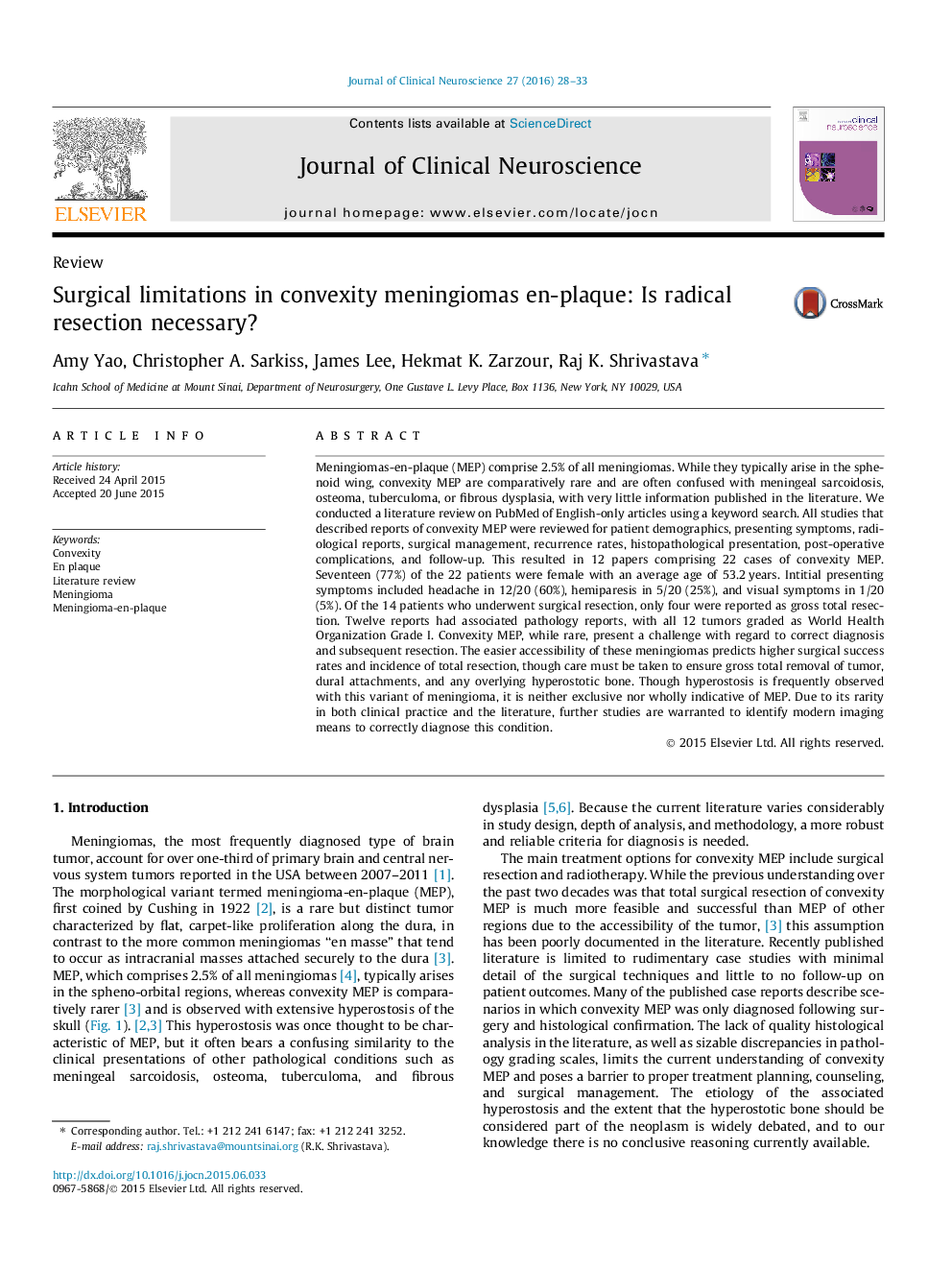| Article ID | Journal | Published Year | Pages | File Type |
|---|---|---|---|---|
| 3058231 | Journal of Clinical Neuroscience | 2016 | 6 Pages |
•12 studies comprising 22 cases of convexity meningioma-en-plaque were reviewed.•Of 14 patients who underwent surgical resection, 4 were reported as gross total.•12 cases had associated pathology reports with all 12 graded as WHO Grade I.•Successful radical removal with long-term followup is not yet described in literature.•Further studies are warranted to identify modern imaging for correct diagnosis.
Meningiomas-en-plaque (MEP) comprise 2.5% of all meningiomas. While they typically arise in the sphenoid wing, convexity MEP are comparatively rare and are often confused with meningeal sarcoidosis, osteoma, tuberculoma, or fibrous dysplasia, with very little information published in the literature. We conducted a literature review on PubMed of English-only articles using a keyword search. All studies that described reports of convexity MEP were reviewed for patient demographics, presenting symptoms, radiological reports, surgical management, recurrence rates, histopathological presentation, post-operative complications, and follow-up. This resulted in 12 papers comprising 22 cases of convexity MEP. Seventeen (77%) of the 22 patients were female with an average age of 53.2 years. Intitial presenting symptoms included headache in 12/20 (60%), hemiparesis in 5/20 (25%), and visual symptoms in 1/20 (5%). Of the 14 patients who underwent surgical resection, only four were reported as gross total resection. Twelve reports had associated pathology reports, with all 12 tumors graded as World Health Organization Grade I. Convexity MEP, while rare, present a challenge with regard to correct diagnosis and subsequent resection. The easier accessibility of these meningiomas predicts higher surgical success rates and incidence of total resection, though care must be taken to ensure gross total removal of tumor, dural attachments, and any overlying hyperostotic bone. Though hyperostosis is frequently observed with this variant of meningioma, it is neither exclusive nor wholly indicative of MEP. Due to its rarity in both clinical practice and the literature, further studies are warranted to identify modern imaging means to correctly diagnose this condition.
